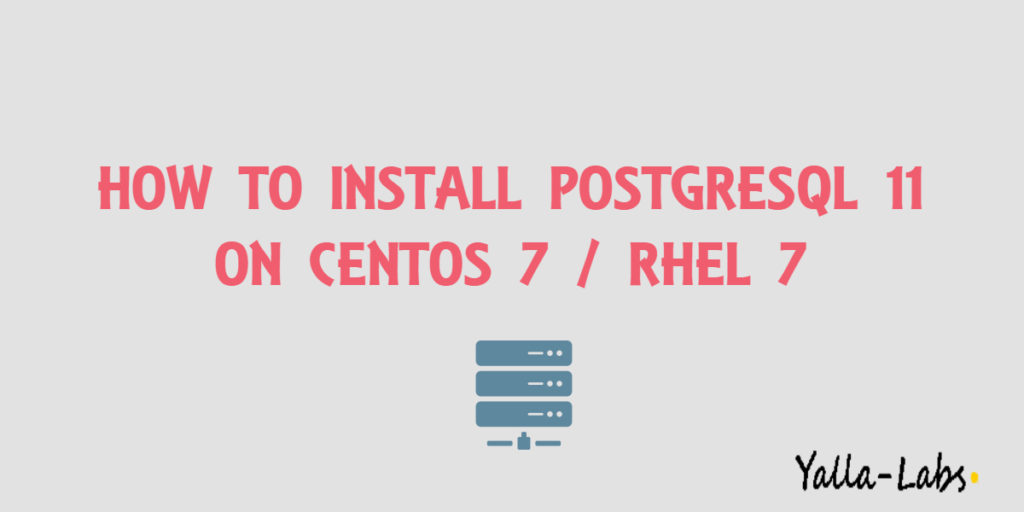
- #Postgresql yum repo how to#
- #Postgresql yum repo install#
- #Postgresql yum repo update#
- #Postgresql yum repo software#
Login as a demo user to test: $ psql -U demo_usr -h localhost -d demo_db Postgresql=$ grant all privileges on database demo_db to demo_usr Postgresql=$ createdb demo_db -O demo_usr Login to PostgreSQL console to create a user and database for testing: postgresql=$ createuser demo_usr Postgresql=$ Step 9: Create A Demo User and Database Postgresql=$ psql -c "alter user postgres with password 'password'" Set admin user and password for PostgreSQL: $ su - postgres Restart service after making configuration changes: $ systemctl restart rvice Step 8: Set PostgreSQL Admin Password To allow PostgreSQL to accept remote connections, first, we need to change the listen to address to * in the configuration file: $ nano /var/lib/pgsql/11/data/nfĪlso, we need to let PostgreSQL know to accept remote connections: $ nano /var/lib/pgsql/11/data/pg_hba.conf $ firewall-cmd -reload Step 7: Enable Remote Access If the firewall is configured on CentOS, we need to open ports so remote users can connect to PostgreSQL: $ firewall-cmd -add-service=postgresql -permanent $ systemctl start rvice Step 6: Configure Firewall

Step 5: Enable and Start PostgreSQL ServiceĮnable the service so the PostgreSQL starts automatically during server reboot: $ systemctl enable rvice The default directory where PostgreSQL will store data is /var/lib/pgsql/11/data.
#Postgresql yum repo install#
Use the following command to install PostgreSQL: $ yum install postgresql11-server postgresql11 -y Step 4: Initialize DatabaseĪfter installation is complete, we need to initialize the PostgreSQL database, which will create a data directory to store database and few configuration files: $ /usr/pgsql-11/bin/postgresql-11-setup initdbĭepending on the storage system used or allocated resources, the initialization may take some time. Step 3: Install PostgreSQL Server and Client Visit PostgreSQL Repositories for additional package information on various operating systems.
#Postgresql yum repo update#
If you have not done so, use the following command to update CentOS and reboot: $ yum update -yĪdd the PostgreSQL repository in CentOS 7. It is always best to start with an updated operating system.
#Postgresql yum repo how to#
In this tutorial, we are going to learn how to install and configure PostgreSQL 11.x on CentOS 7. PostgreSQL is also the first database platform to implement Multi-Version Concurrency Control or MVCC.

PostgreSQL is not the only contender in the database industry but what makes this a superior choice is that due to high-level stability and lower management overhead, the cost of PostgreSQL ownership is much lower in the long run. The code is available for anyone to modify and distribute under PostgreSQL license. It was created to be a powerful open source relational database system able to run across multiple platforms such as Linux, Windows, Solaris, Mac, etc. The best part about the DNF command is that it automatically computes dependencies and also determines the action requires to install packages.Based on Postgres 4.2, PostgreSQL was developed at Berkeley Computer Science Development, University of California.
#Postgresql yum repo software#
DNF command is a software package manager that installs, updates and removes packages on RPM-based Linux distributions.

On this link, you can get the link of any version of PostgreSQL on any version of OS.Īfter getting the link, use it with the DNF command. Just select your operating system and download it! I have provided the link below : Just visit the official website of PostgreSQL and you would find the download option. You might be thinking from where did I get this link? Folks, it’s simple. RPM stands for Redhat Package Management. The first step is to install the repository RPM. I might say this method is one of the easiest ways to install PostgreSQL. Here, we will discuss how to install PostgreSQL from PostgreSQL repositories. Install PostgreSQL on CentOS using Official Repositories


 0 kommentar(er)
0 kommentar(er)
